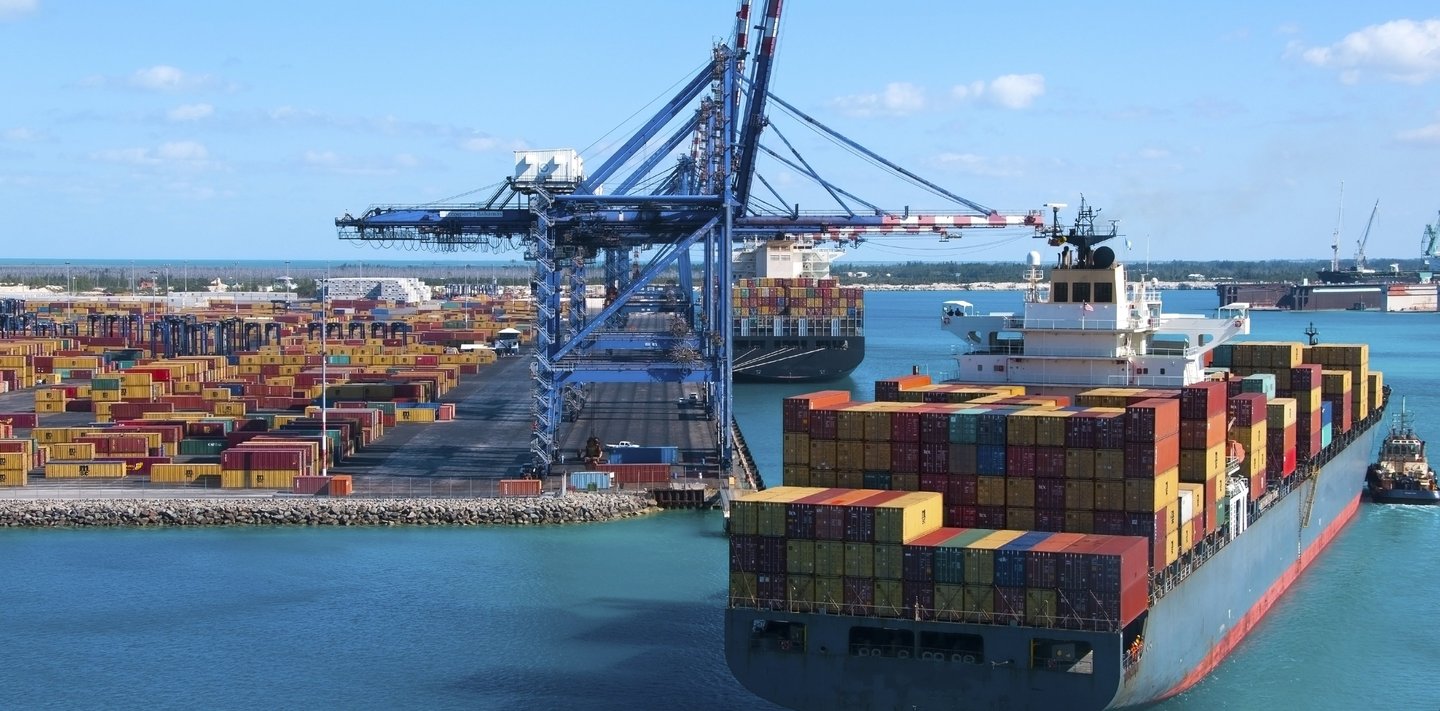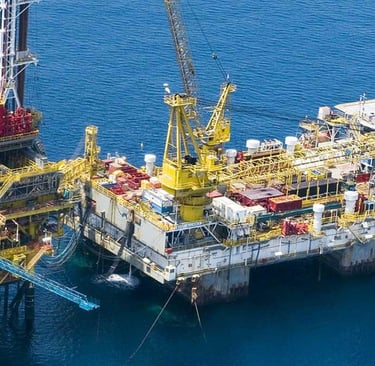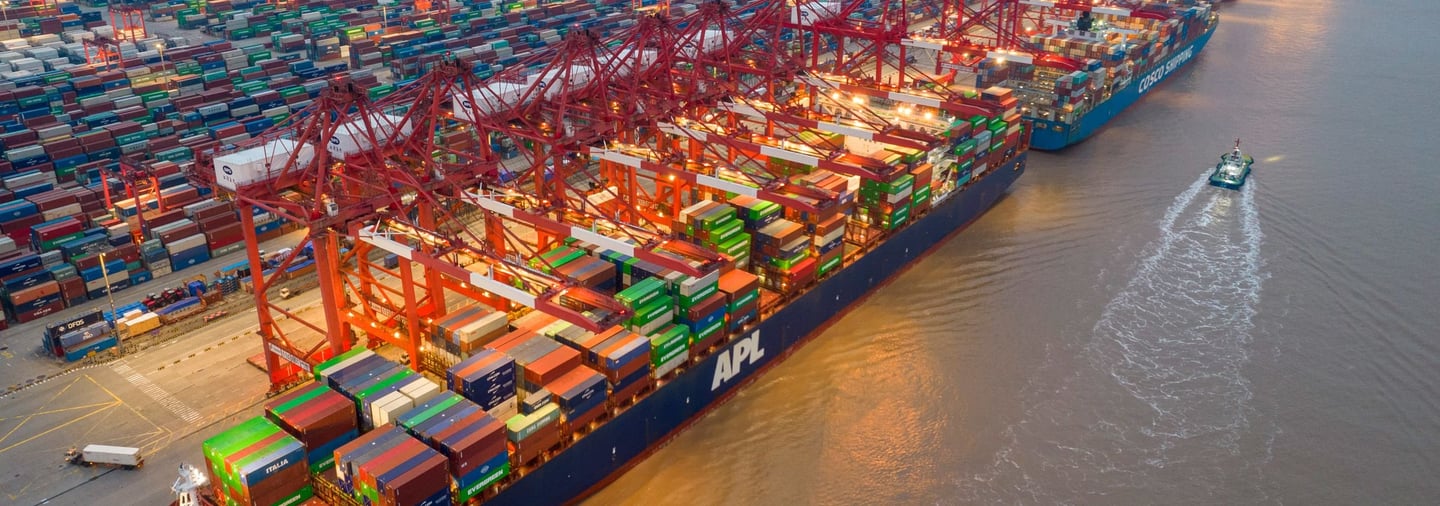📞+86 153 7530 2641 📧 hongjing.Wang@feichuncables.com
What is Silicone Rubber Cable? Analysis of its Application Scenarios in Australian Ports
Discover what silicone rubber cable is and why it's a top choice for Australian port environments. Learn how its high temperature resistance, flexibility, and UV durability make it perfect for STS cranes, AGVs, and shore power systems in coastal operations.
hongjing.Wang@Feichun
7/9/202510 min read


Introduction
In the intricate machinery systems that power modern ports, cables serve as the vital arteries that deliver electrical power and transmit critical data signals. From towering ship-to-shore (STS) cranes that gracefully move containers from massive vessels to automated guided vehicles (AGVs) that navigate bustling terminals, every piece of equipment depends on reliable cable infrastructure to function effectively. The harsh marine environment, characterized by extreme temperatures, corrosive salt spray, and intense UV radiation, places extraordinary demands on these electrical lifelines.
Among the various cable technologies available today, silicone rubber cables have emerged as a superior solution for port applications. These specialized cables offer unique properties that make them particularly well-suited for the challenging conditions found in maritime environments: exceptional high temperature resistance, remarkable flexibility even in extreme conditions, and outstanding insulation performance that ensures safe and reliable operation of critical port infrastructure.
This comprehensive analysis aims to demystify silicone rubber cable technology and examine its specific applications within Australian port environments. We will explore why these cables have become the preferred choice for many port operators and how they contribute to the efficiency, safety, and longevity of port operations across Australia's extensive coastline.
What is Silicone Rubber Cable?
A silicone rubber cable is fundamentally defined as an electrical cable that incorporates silicone rubber as either its outer protective sheath or as the insulation layer surrounding the conductor. This seemingly simple definition belies the sophisticated engineering and advanced materials science that goes into creating these high-performance cables.
The basic structure of a silicone rubber cable consists of a copper conductor at its core, surrounded by silicone-based insulation and often protected by a silicone rubber sheath. The copper conductor, typically made from high-purity oxygen-free copper, provides excellent electrical conductivity while the silicone components deliver the cable's unique performance characteristics.
The material properties of silicone rubber are what set these cables apart from conventional alternatives. Silicone exhibits remarkable high temperature resistance, capable of operating continuously at temperatures ranging from 180°C to 250°C depending on the specific formulation. This heat resistance is complemented by equally impressive low temperature performance, with many silicone cables maintaining flexibility and electrical properties at temperatures as low as -60°C.
Beyond temperature performance, silicone rubber cables demonstrate exceptional resistance to ultraviolet radiation, ozone exposure, and various chemical contaminants commonly found in marine environments. The inherent flexibility of silicone rubber allows these cables to bend, twist, and flex repeatedly without degrading, making them ideal for applications involving constant movement or vibration.
When compared to traditional cable materials, the advantages become clear. PVC (polyvinyl chloride) cables, while cost-effective, typically operate within a much narrower temperature range and can become brittle in cold conditions or soften excessively in heat. PUR (polyurethane) cables offer better mechanical properties than PVC but still cannot match silicone's temperature extremes or UV resistance. TPE (thermoplastic elastomer) cables provide good flexibility but lack the thermal stability and chemical resistance that silicone delivers.
The electrical insulation performance of silicone rubber cables is another critical differentiator. Silicone rubber maintains its dielectric properties across a wide temperature range and provides excellent insulation resistance even in humid conditions. This stability ensures consistent electrical performance regardless of environmental conditions, a crucial factor in maintaining the reliability of port equipment.
Key Performance Advantages of Silicone Cables
The superior performance characteristics of silicone cables stem from the unique molecular structure of silicone rubber, which creates a material perfectly suited to demanding industrial applications. Understanding these advantages helps explain why silicone cables have become increasingly popular in port environments worldwide.
High temperature and low temperature resistance represents perhaps the most significant advantage of silicone cables. In port environments where equipment operates continuously under intense solar radiation during summer months and faces potential freezing conditions during winter, this thermal stability proves invaluable. Motors, brake systems, and power distribution equipment generate substantial heat during operation, and silicone cables can handle these thermal challenges without degradation. The wide operating temperature range also means that a single cable type can serve multiple applications, simplifying inventory management and reducing installation complexity.
The exceptional flexibility of silicone cables addresses another critical need in port operations. Modern ports increasingly rely on automated systems that involve constant movement, such as container handling equipment, automated guided vehicles, and rotating crane systems. Traditional cables can suffer from work hardening and eventual failure when subjected to repeated bending cycles. Silicone cables maintain their flexibility throughout their service life, reducing maintenance requirements and extending operational lifespan. This flexibility also simplifies installation, as the cables can be routed through tight spaces and around obstacles without risk of damage.
Electrical insulation and stability represent core safety considerations in port operations. Silicone cables provide excellent dielectric strength and maintain their insulation properties across their entire operating temperature range. This consistency ensures that high-voltage equipment operates safely and reliably, reducing the risk of electrical faults that could cause equipment damage or pose safety hazards to personnel. The stable electrical characteristics also contribute to reduced electromagnetic interference, which is increasingly important as ports adopt more sophisticated electronic control systems.
UV and corrosion resistance directly address the environmental challenges of coastal port operations. The combination of intense sunlight, salt spray, and chemical exposure from cargo handling can rapidly degrade conventional cable materials. Silicone rubber naturally resists UV degradation and maintains its properties even after prolonged exposure to harsh coastal conditions. This resistance extends cable life and reduces replacement costs, particularly important for cables installed in difficult-to-access locations on large port equipment.
The fire safety characteristics of silicone cables provide an additional layer of protection in port environments. Many silicone formulations are inherently flame-resistant and produce minimal smoke when exposed to fire. In the event of an electrical fault or fire, these properties can help prevent fire spread and maintain visibility for emergency response, contributing to overall port safety.


Typical Applications of Silicone Cables in Australian Ports
Australian ports present unique challenges that make silicone cables particularly valuable across various applications. The combination of extreme heat, salt spray, and demanding operational requirements creates an environment where cable performance directly impacts operational efficiency and safety.
Ship-to-shore (STS) quay cranes represent one of the most demanding applications for port cables. These massive structures handle containers weighing up to 65 tonnes and operate continuously in exposed coastal environments. The brake systems on these cranes generate significant heat during operation, particularly during the frequent stopping and starting required for precise container positioning. High temperature resistant silicone cables are essential for powering these brake systems, ensuring reliable operation even when ambient temperatures exceed 40°C during Australian summer months. The cables must also withstand the mechanical stress of the crane's movement while maintaining electrical integrity for safety-critical braking functions.
Automated conveying systems, including automated guided vehicles (AGVs), automated stacking cranes (ASCs), and rail-mounted gantry cranes (RMGs), require cables that can handle continuous operation and frequent movement. These systems operate around the clock, with cables subjected to constant flexing, vibration, and environmental exposure. Silicone cables provide the flexibility and durability needed for these applications while offering excellent resistance to electromagnetic interference that could disrupt communication systems. The anti-interference properties are particularly important in automated systems where precise control signals must be transmitted reliably.
Shore power systems represent a growing application area as ports work to reduce emissions from berthed vessels. These systems provide electrical power to ships while docked, allowing them to shut down auxiliary engines and reduce air pollution. Shore power installations require high-capacity cables capable of handling substantial electrical loads while maintaining safety in the humid, corrosive port environment. Silicone cables excel in these applications due to their excellent insulation properties and ability to handle high power levels safely. The flexibility of silicone cables also simplifies the connection process, as they can be easily maneuvered into position for vessel connections.
Marine and shore temporary power supply applications benefit significantly from silicone cable characteristics. Port operations frequently require temporary electrical connections for maintenance activities, special cargo handling, or emergency power supply. Silicone cables are particularly well-suited for these applications because they remain flexible and easy to handle even in cold conditions, can be quickly deployed and retrieved, and resist damage from the rough handling typical of temporary installations. Their resistance to salt water and humidity also makes them ideal for connections to vessels or equipment in wet environments.
Control and signal transmission systems in modern ports rely heavily on reliable communication networks. These systems manage everything from traffic control and cargo tracking to security systems and equipment monitoring. Silicone cables provide stable signal transmission characteristics even in high-temperature environments or areas with strong electromagnetic interference. This reliability is crucial for maintaining operational efficiency and safety in increasingly automated port environments.


Why Silicone Cable is Particularly Suitable for Australian Port Environments
Australia's unique geographical and climatic conditions create specific challenges that make silicone cables particularly valuable for port applications. The country's extensive coastline spans multiple climate zones, from tropical regions in the north to temperate areas in the south, each presenting distinct environmental challenges for cable infrastructure.
Australian ports such as Darwin, Brisbane, and Fremantle experience intense solar radiation and high ambient temperatures during summer months. Darwin, located in the tropical north, regularly sees temperatures exceeding 35°C with high humidity levels that can accelerate cable degradation. Brisbane's subtropical climate combines high temperatures with intense UV radiation, while Fremantle faces the additional challenge of strong coastal winds that can increase salt spray exposure. These conditions place exceptional demands on cable materials, making the high temperature resistance and UV stability of silicone cables essential for reliable operation.
The around-the-clock operation requirements of modern Australian ports compound these environmental challenges. Major container terminals operate continuously to handle the increasing volume of trade, particularly with Asian markets. Equipment cannot be shut down during peak temperature periods, requiring cables that maintain their properties and performance regardless of ambient conditions. Silicone cables' wide operating temperature range ensures consistent performance from the cool pre-dawn hours through the heat of midday and into the evening.
The salt spray environment present at all Australian ports creates particularly aggressive corrosion conditions. The combination of salt, moisture, and oxygen can rapidly degrade conventional cable materials, leading to insulation breakdown and eventual failure. Silicone rubber's excellent resistance to salt water and chemical corrosion makes it ideal for these conditions, significantly extending cable service life and reducing maintenance requirements.
Australian ports are increasingly adopting automated and intelligent systems to improve efficiency and reduce operational costs. These systems require cables that can handle both high-power applications and sensitive control signals reliably. The electrical stability and interference resistance of silicone cables support these advanced systems while their flexibility accommodates the movement requirements of automated equipment.
Compliance with Australian cable standards represents another crucial factor in cable selection. Silicone cables can be manufactured to meet relevant Australian standards including AS/NZS 5000 (electrical installations), IEC 60245 (rubber insulated cables), AS/NZS 2802 (electrical cables for fixed installations), AS/NZS 3808 (electrical equipment for mines), and AS/NZS 1660 (electrical equipment for explosive atmospheres). This compliance ensures that installations meet safety requirements and regulatory standards while providing the performance advantages of silicone technology.
The growing focus on environmental sustainability in Australian ports also favors silicone cables. Their extended service life reduces replacement frequency, minimizing waste and reducing the environmental impact of port operations. The flame-resistant properties of silicone cables also contribute to fire safety, reducing the risk of environmental damage from electrical fires.
Purchase and Deployment Recommendations
Selecting and deploying silicone cables for Australian port applications requires careful consideration of multiple factors to ensure optimal performance and value. The harsh marine environment and critical nature of port operations demand a systematic approach to cable selection and installation.
When choosing silicone cables, certification should be the primary consideration. Look for cables that carry recognized certifications such as VDE (German electrical safety), AS/NZS (Australian/New Zealand standards), and CE (European conformity) markings. These certifications ensure that the cables meet rigorous safety and performance standards. Manufacturers like Feichun Cable, with over 15 years of experience in the cable industry since 2006, provide the expertise and quality assurance necessary for critical port applications.
Technical specifications require careful attention to ensure compatibility with specific applications. The number of conductor cores must match the electrical requirements of the equipment, whether for power transmission, control signals, or combined applications. Voltage levels should be selected with appropriate safety margins, considering both normal operating conditions and potential fault scenarios. The bending radius specification is particularly important for applications involving movement, as excessive bending can cause conductor damage or insulation failure. Sheath thickness affects both mechanical protection and flexibility, requiring optimization based on the specific installation environment.
Compatibility with automation systems represents a crucial consideration for modern port installations. Cables must be compatible with drum systems used on cranes and other moving equipment, maintaining their properties through thousands of winding and unwinding cycles. For applications involving drag chain systems, cables must be specifically designed to handle the unique stresses of this installation method. The electrical characteristics must also be compatible with the sensitive control systems used in automated equipment.
Installation planning should account for the unique characteristics of silicone cables. While their flexibility is advantageous, proper support and protection are still essential to maximize service life. Cable routing should minimize exposure to mechanical damage while ensuring adequate heat dissipation. In high-temperature applications, consider the thermal expansion characteristics of silicone cables and provide appropriate strain relief.
For drum cable applications, silicone cables offer particular advantages but require careful selection of the appropriate construction. The cable must be designed to handle the repetitive bending stresses while maintaining electrical integrity. Consider factors such as the drum diameter, winding speed, and environmental conditions when selecting drum cable specifications.
High-temperature control systems particularly benefit from silicone cables, but proper installation practices are essential. Ensure adequate clearance from heat sources, use appropriate cable supports that won't degrade at high temperatures, and consider the thermal expansion of the cable when determining installation length.
Regular inspection and maintenance protocols should be established to monitor cable condition and identify potential issues before they cause failures. While silicone cables offer excellent durability, periodic inspection can identify mechanical damage, contamination, or other issues that could affect performance.
Conclusion
Silicone cables have demonstrated their exceptional value in port systems worldwide, with their advantages particularly pronounced in Australia's challenging coastal environments. The combination of extreme temperature resistance, superior flexibility, excellent electrical properties, and outstanding environmental resistance makes silicone cables ideally suited to the demanding requirements of modern port operations.
The harsh Australian climate, characterized by intense UV radiation, high temperatures, salt spray, and humidity, creates conditions where conventional cable materials often fail prematurely. Silicone cables not only survive these conditions but maintain their performance characteristics throughout their service life, providing reliable operation that directly contributes to port efficiency and safety.
Correct cable selection based on a thorough understanding of application requirements and environmental conditions ensures stable equipment operation while maximizing the return on investment. The initial higher cost of silicone cables is typically offset by their extended service life, reduced maintenance requirements, and improved system reliability.
As Australian ports continue to evolve toward greater automation and intelligence, the demands on cable infrastructure will only increase. Advanced systems require cables that can handle both high-power applications and sensitive control signals reliably, while the increasing use of automated equipment demands cables that maintain their properties through millions of flexing cycles. Silicone cables are uniquely positioned to meet these evolving requirements.
The future of port development in Australia will likely see increased adoption of sustainable technologies, advanced automation systems, and more stringent safety requirements. Silicone cables, with their combination of performance, reliability, and environmental resistance, represent a forward-looking solution that can support these developments while providing the dependable infrastructure that modern ports require.
Investment in high-quality silicone cables from established manufacturers ensures that Australian ports can continue to operate efficiently and safely while meeting the growing demands of international trade. As the backbone of electrical infrastructure in these critical facilities, silicone cables play an essential role in maintaining Australia's position as a leading maritime nation and supporting the country's economic growth through efficient port operations.
How to Reach Us
Get in Touch
SiteMap
Product Catalogue
Reeling Cable
Festoon Cable
Shore Power Cable




Scan to add us on WeChat
